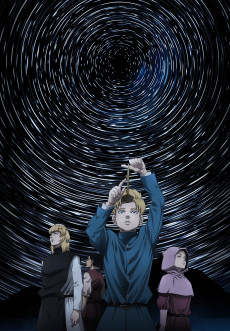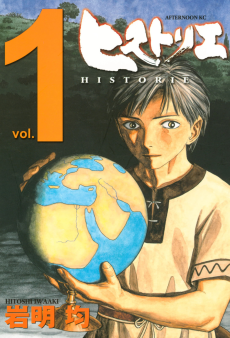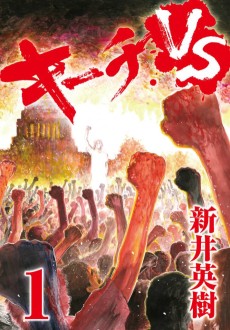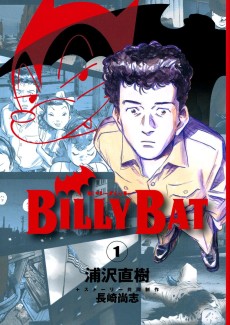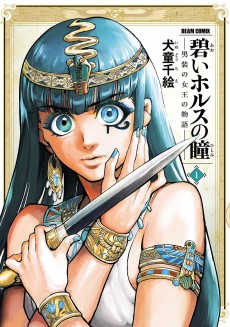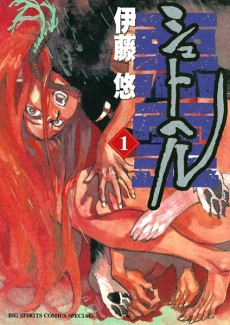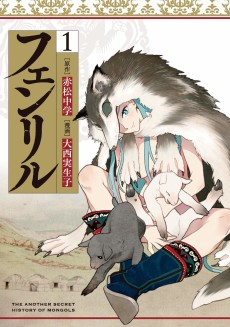CHI. CHIKYUU NO UNDOU NI TSUITE
STATUS
COMPLETE
VOLUMES
8
RELEASE
April 18, 2022
CHAPTERS
62
DESCRIPTION
In the fifteenth century, claiming that the Earth revolves around the sun was a heresy that could get believers burned at the stake. Child prodigy Rafal is introduced to the truth about the universe by his mentor, and then must flee when the Inquisition comes to mete out "God's justice." With only a peculiar pendant to guide him, will Rafal discover his master's research, and can he and other believers set the world alight?
(Source: Seven Seas Entertainment)
Notes:
- Winner of the 26th Annual Tezuka Osamu Cultural Prize in 2022.
- Nominated for the 14th and 15th Manga Taisho Award, placing 2nd and 5th respectively.
- Placed 10th in the 7th Annual Next Manga Award.
- Nominated for the 67th Shogakukan Manga Award in 2021 in the General category.
- Ranked 2nd in the Kono Manga ga Sugoi! (Male Readers Division).
CAST
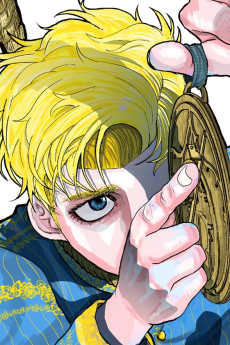
Rafał
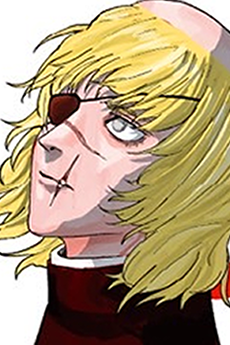
Badeni
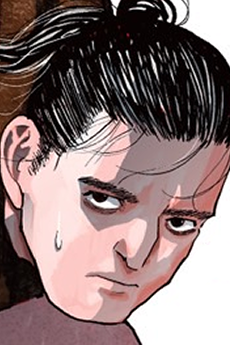
Oczy
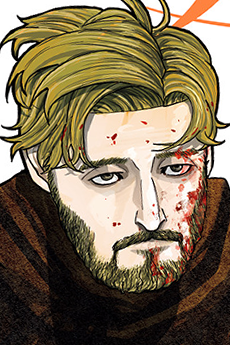
Nowak
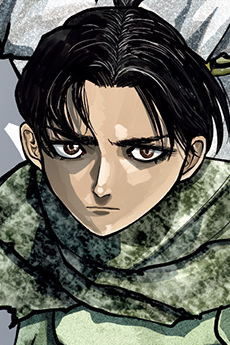
Draka
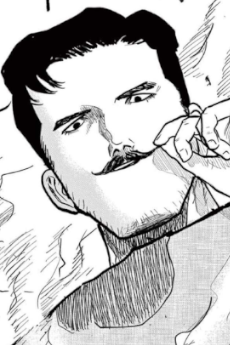
Schmitt
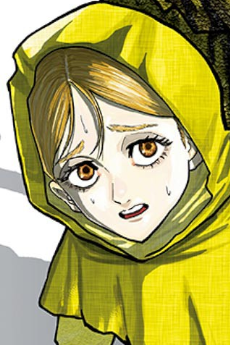
Jolenta

Hubert

Piast

Lewandlowski
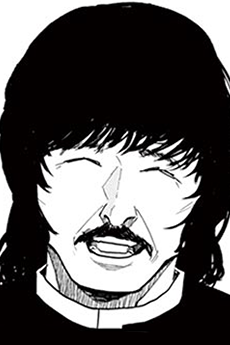
Potocki
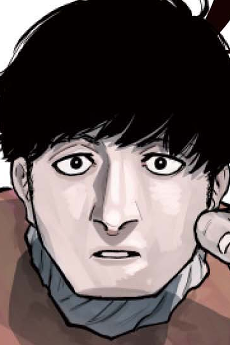
Albert Brudzewski
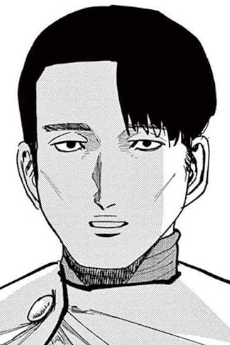
Fry

Kolbe
CHAPTERS
RELATED TO CHI. CHIKYUU NO UNDOU NI TSUITE
REVIEWS

91Gilbert
100/100A story unfolds with a question, and ends with one that leave you speechless.Continue on AniListA story unfolds with a question, and ends with one that leave you speechless. While browsing Anilist, I stumbled upon this manga in the recommended section. At first, I skimmed through the synopsis and reviews, and while it seemed intriguing, it didn't quite captivate me enough to dive in. That changed when I glanced at the manga cover and noticed a detail that caught my attention.

In that image, there's a boy holding something like a compass and looking up at the sky. Seems pretty normal, right? That's until I suddenly noticed the rope wrapped around his neck. He seemed to be hanging and gazing at the sky as if nothing was happening. It struck me as strange. So, I decided to give it a try, and I don't regret reading it.
This manga, I must say, is a prime example of a story with a complete beginning and ending. It's brief yet impactful, conveying the story's purpose faithfully and leaving many questions for the readers. It made me read while researching details related to astronomy and gain a different perspective on changes in the flow of history.
Therefore, I decided to write this review to compile what I've learned and share my perspective on this series. This might be the longest review I've ever written, and I hope it helps you understand more about the manga to some extent.
__[SPOILER]__ Since in the article, I’ve used many images and important details from the story, you should read the story at least once before reading this review. However, if you want to have a clear understanding of this story before reading, you can skim through the first part of the review and skip the rest.
The information I have gathered is mostly based on the internet, written from the perspective of a person without expertise in astronomy and not following any specific religion, so there may be unavoidable errors.
Sadly, English is not my mother tongue, and the grammar I used in this post will probably make it difficult for you to understand during reading. I hope you can forgive me that!
__THE HISTORY__ Before delving into the story's content, let's talk about the historical context upon which this story is based.
Going back in time, there was a period when science and art were completely dormant for 300 years; a period considered the most chaotic in human history, prompting researchers to expend countless pages discussing it, known as "The Dark Ages."

(Fall of the Rome) The Dark Ages refers to the entirety of the Middle Ages, spanning from the 5th to the 15th centuries in Western Europe. It denotes a period following the collapse of the Western Roman Empire, marked by economic, intellectual, and cultural decline.
Throughout that period, countless pandemics spread across continents, with the most dreadful being the "Black Death" pandemic. Originating in Asia and reaching Europe in 1347, it reoccurred several times within the same century, claiming the lives of over one-third of the population in Europe. This was accompanied by a 100-year-long war, devastating lands, crops, not unlike the impact of the Black Death.

Amidst death rampant everywhere, at a time when human understanding of the origins and causes of epidemics remained limited, religion served as a redemption for many. Ancient and medieval religious beliefs attributed disease outbreaks to the wrath of deities, the punishment of God for human sins, or the work of demons, spirits, and other supernatural forces. These religious interpretations of the origins of diseases significantly influenced that era, leading to purges and witch hunts. Torture was used to force confessions from victims (primarily women and those of lower classes), and thousands of innocent victims were burned alive at the stake.

(Left: Pope Alexander VI - Right: Last Judgement by Stephan Lochner, in 1435) In the 1500, the Roman Catholic Church held unparalleled power in Western Europe. It maintained its authority through the use of threats such as excommunication and eternal damnation. Around that time, a notable figure emerged, Pope Alexander VI, who was infamous for the widespread corruption during his papacy.
The historical context of the Church at that time was a blend of "spiritual authority" and "temporal authority," so the pope not only wielded power within the Church but also had influence over the kings and rulers of the era. Because of this, wealthy noble families sought to disrupt the church hierarchy by placing their family members in positions of power within the Church. Their intention was not to serve God or the Church but to gain political power and seek profit. Once Alexander VI attained the highest position as pope, he used the power of that position to satisfy his desire for power: accumulating wealth for himself, his families, and his lineage.
However, the calamities of the era continued to disrupt the Church. Disciplines highly regarded in the Church such as philosophy and theology gradually lost their prominence, leading to the emergence of new ideas that posed a risk to the Church's authority.

Among these was the field of astronomy, where theories of geocentrism were considered closely linked to the religion and beliefs of the people of that time. Therefore, the emergence of alternative studies was seen as heretical, and the Church sought to hunt down those who conducted research or possessed materials with "heretical" ideas. Until the theory of heliocentrism emerged and changed the course of history.
But how did the theory of heliocentrism come about? What's the story behind its emergence?
That is the central theme this manga revolves around, and now let's return to the story.
__THE STORY__ This story revolves around two main themes: Heliocentrism & Geocentrism. Throughout the narrative, we will encounter numerous characters and their ideologies about the universe, their perspectives on this world, the Earth, and God. Eventually, as everything is upheaved by a theory, they find themselves in a psychological struggle between pursuing truth or faith, and how they adamantly persist in proving something considered contrary to the prevailing beliefs of that era.
Though the journey may be brief, the meanings and messages it imparts are difficult to fully articulate. Therefore, I have divided it into three parts, each corresponding to the aspects you will encounter throughout the story. Naturally, it will not encompass everything but rather focus on the main point. The remaining nuances in the story, you can explore and experience for yourself, as revealing them all would spoil the best part of this story ^^
__HELIOCENTRISM & GEOCENTRISM__ In the past, when the universe was still an undiscovered mystery, a question was posed: "What lies at the center of our universe?" To answer this question, two theories have sparked debates within the scientific community: Heliocentrism and Geocentrism.
In definition, the heliocentric theory posits that the Sun resides at the center of the universe, while the geocentric theory argues that the Earth is the center of the universe, with the Sun and other celestial bodies revolving around it.

(Left: Geocentrism – Right: Heliocentrism) We all know that the Earth revolves around the Sun, so the heliocentric theory is undoubtedly the correct answer. However, if this question were posed prior to the 15th century, most responses would likely assert that the Earth is indeed the center of the universe.

The reason is that the geocentric theory had been formed very early on, dating back to ancient Greece, and it had gained consensus among most erring philosophers such as Aristotle and Ptolemy. The emergence of models demonstrating Earth at the center further reinforced this hypothesis. In the first chapter, our main character, Rafal, also provided some typical reasons to explain the geocentric theory, such as citing Aristotle's statement [all heavy objects fall below], and arguing that Earth must be at the center of the universe for all objects around to be attracted to and revolve around it.
However, in reality, these ideas had never been experimentally tested; they had simply been reiterated for so long that they were unquestionably accepted. Until the early 1600s, these ideas still dominated all astronomical thoughts and theories. So, this partly explains why Rafal could confidently answer as he did. But his belief was shaken after a fateful encounter with an eccentric researcher.
The first turning point of the story occurred when Rafal asked the man about his eccentric research. Instead of answering, the man posed a series of questions to him about the true shape of the universe.
- Do you know the shape in which space envelops itself in?
If we were to rely on the geocentric theory, we would have a depiction with Earth in the center, along with symbolic orbits of celestial bodies revolving around it, as illustrated by Rafal below.

However, I want you to look at that drawing and feel about it. How does it make you feel? If this were the truth of the universe, what do you think about it? And the man continued to ask Rafal as follows:
- Does this truth seem beautiful to you?
Now, look back at that drawing once again and perceive whether it is beautiful. When first reading this scene, I think some of you might feel like I do, finding the image beautiful in a certain way. Of course, speaking of the beauty of the drawing alone, it is not incorrect, but the beauty we are referring to here is "the truth". But how is truth considered beautiful? There are many ways to answer this question, but they all converge on one main idea, that is, 'the beauty of truth lies in its simplicity.'
To clarify this, I will show you an animation demonstrating the motion of planets based on both the geocentric and heliocentric theories.

(Left: Heliocentrism – Right: Geocentrism) After watching, let's compare the motions of both sides. Heliocentrism appears to be more visually appealing to us. It is orderly, follows laws, and seems to satisfy the condition of the beauty of truth – which is its simplicity. On the other hand, in geocentrism, initially, things may seem easy to perceive, but as time progresses, everything becomes chaotic. There is no order; each planet follows a very complex law of motion, and it takes a while for us to distinguish the motion of each planet. Thus, hasn't geocentrism failed to meet the condition of "simplicity" of the beauty of truth?

At this point, Rafal also responded that he found the geocentric side to be entirely chaotic, lacking any beauty of truth in it. However, he explained that sometimes the truth may not be beautiful, so it is not uncommon for truth to lack orderliness, thus, the geocentric hypothesis might be somewhat accurate.
However, truth must be absolute. The man refuted Rafal's thoughts, asserting that there is still truth that can satisfy both accuracy and beauty. To achieve that state, we must assume that the Sun and stars do not move; the Sun remains stationary throughout, and we, the observers, must move around it.

Imagine we're sitting in a car, looking out the window, and the scenery around us seems to be moving backward while we remain still. However, in reality, we are also moving along with the car, and the scenery is actually stationary, leading to the illusion that it's moving. Rafal tested this himself and had to admit that if the Earth were also in motion, then celestial bodies appearing stationary would also seem to be moving in his eyes. This is the crux of the issue about the Earth's movement.
This is the premise of the heliocentric theory and also the foundation for our main characters to prove the heliocentric theory is correct.

Therefore, to prove the heliocentric theory correct, we need to demonstrate the Earth's movement. However, the issue here is how to determine whether the Earth is in motion or not. If we were to observe the Earth's motion from outside of it, that would be entirely feasible for us now. But for people in the 15th century, it was completely impossible. Hence, they decided to use an alternative method, which was to observe the motion of nearby planets and prove that their orbits are circular.
According to the heliocentric theory, all planets have circular orbits and revolve around the Sun. Therefore, if they observed the planet's motion as circular, it would imply the correctness of the heliocentric theory. However, we encountered a problem.

When observing the orbit of Mars over a period of time, our characters noticed that at a certain point, Mars suddenly halted. Instead of continuing its forward motion, it moved backward before eventually returning to its orbit.

This backward movement has completely disrupted the circular orbit of the heliocentric theory. In doing so, it's effectively disproven the heliocentric theory, hasn't it? Of course, it's not just limited to heliocentrism; even in the geocentric model, scientists observed this peculiar retrograde motion and sought explanations for it. They named this phenomenon the Retrogradation of Planets.

To explain the retrograde motion, proponents of the geocentric theory presented a widely recognized model at the time called the Ptolemaic System by Ptolemy. Let's take a look at an animation together to visualize this system:

Ptolemy explained the apparent "looping motion" of the planets by placing the center of one rotating circle, called the epicycle, which carried the planet, on another rotating circle, called the deferent, so that together the motions of the two circles produced the observed looping motion of the planet.
The original purpose of the system was to account for the difference in length of the seasons (northern autumn was about five days shorter than spring during this time period) in the past by placing the Earth away from the center of rotation of the rest of the universe. Another sphere, the epicycle, is embedded inside the deferent sphere and is represented by the smaller dotted line to the right. A given planet then moves around the epicycle at the same time the epicycle moves along the path marked by the deferent. These combined movements cause the given planet to move closer to and further away from the Earth at different points in its orbit, and explained the observation that planets slowed down, stopped, and moved backward in retrograde motion, and then again reversed to resume normal, or prograde, motion.

(Piast reacts to the epicycle model) This model simultaneously satisfies Aristotle's concentric spheres (explaining the celestial sphere) and Ptolemy's centrifugal force (explaining the planets' circular motion within the epicycle). From the perspective of the geocentric theory, this retrograde motion is entirely logical. Therefore, the observation of Mars not moving in a perfect circle validates the geocentric theory.

However, Badeni argued that it is precisely because planets move forward that we see them moving backward. He provided an incredibly simple example that was sufficient to challenge the theories of Aristotle and Ptolemy from 1000 years ago. This is also the scene that impressed me when I read it.

Badeni assumed that the Earth also moves similarly to other planets. He imagined Okgi (representing the Earth) and himself (representing Mars) moving together in a circular path with the center being a wooden branch. As shown in the illustration, when we view from Okgi's perspective (representing the Earth), the closer Okgi moves towards Badeni, the more it feels like Badeni is moving backward, even though he is still moving forward in a straight line as usual.

It explains why Mars moves backward at a certain point. That moment occurs when Earth overtakes Mars because Earth's orbit is smaller than Mars', causing Earth to move faster than Mars. When applying this to the heliocentric theory, we still observe this backward motion, but it is from Earth's perspective, while in reality, Earth is still moving and orbiting around the Sun. For easier visualization, you can watch the video below. Although the planet in the video is Mercury, the explanation applies similarly:
(In case you cannot see [the video](https://imgur.com/YAvkwZy.mp4)) Yes, that's the whole mystery of retrograde motion, as mentioned in the video!
At this point, our characters have summarized the key points of the heliocentric theory:
- The sun is in the center of the universe.
- The planet's orbits are complete spherical motions.
- Each planet follows its own fixed orbital speed.
However, with these key points, we still cannot definitively assert that Earth is in motion. Badeni argues that there are still many shortcomings, such as the complexity in explaining Earth's orbit, and the examples provided are merely hypothetical without specific observational data or real evidence to be scientifically acceptable. Like in the geocentric theory, where we have Ptolemy's model, which was accepted as a theoretical basis in science. Therefore, they need one final determining factor to prove the heliocentric theory correct. But what is that factor?

When all three main characters came to see Piast to access the astronomical council's research documents, he made a condition, which was to observe the phase of Venus.
To explain this, let's go through some facts:
- Venus is the closest planet to Earth and is almost the same size, mass, and density as our planet; in fact, considering only size and mass, Venus could be Earth’s twin.
- Venus (and Mercury) are closer to the Sun than Earth is, a critical fact for understanding this activity.
- When observing planets with a telescope, those closer to the Sun than Earth appears markedly different from those farther away. Closer planets are called inferior planets, while those farther from the Sun than Earth are called superior planets.
- Inferior planets always show phases when observed, while superior planets never do. This is only possible in a heliocentric solar system.
Returning to the story, Piast was a proponent of the geocentric theory and always sought absolute truth to bolster that theory. However, during his research, he once saw Venus waxing, a phenomenon impossible in the geocentric theory. To confirm whether he had misperceived or not, he proposed a challenge to one of the three main characters who had good observational skills to observe whether Venus was waxing.
The chosen one was Okgi. After passing Piast's observational test, he was allowed to take on the challenge. His observations of Venus were the final piece to the heliocentric puzzle, and what happened next was history.

(One of the main turning points of the story) By observing that Venus showed phases, despite remaining near the Sun in Earth's sky, this proves that Venus orbits the Sun and not Earth, which disproved Ptolemy's geocentric model. The last panel where the light destroys the geocentric model was just amazing. I'm really looking forward to what this scene will look like when it's made into an anime.

Having met the final condition, they were now able to proceed with proving the heliocentric theory. During the calculations, Badeni noticed something peculiar as he computed the orbits of the planets. According to theory, the planets should have orbits that are perfect circles for the retrograde motion phenomenon to occur. However, what he calculated showed that the orbit of Mars did not form a perfect circle.

While pondering, Badeni conducted a small experiment with a chain hanging on the wall. He first placed two nails on the wall, symbolizing the Earth and the Sun, and the ball he held represented Mars. Then he rotated the ball around to observe its orbit, and instead of a circle, he noticed it formed an ellipse.
What did this mean? It meant he had discovered a major flaw in the conditions of the heliocentric theory: The planet’s orbit is not a complete spherical motion. More precisely, the orbit of a planet must be an ellipse.
Reflecting on history, the person who discovered this truth was Kepler, who took eight years to observe the elliptical orbits of the planets. In reality, the Sun does not lie precisely at the center of a planet's orbit; instead, it is located off-center at one of the two foci of the ellipse. Some planets, such as Earth, have nearly circular orbits, while the orbit of Mars is an elongated ellipse. Scientists refer to this as Kepler's three laws.
Returning to the story, Badeni finally identified the conditions of the heliocentric theory as follows:
- The sun is in the center of the universe.
- The planet’s orbit is an ellipse.
- Each planet follows its own fixed orbital speed.
- The phase of Venus is possible.
With these conditions, Badeni could finally prove that the Earth is indeed in motion.

Their journey to prove the heliocentric theory has come to fruition. The hypothesis that was once considered heretical, an anti-universe notion, has now become the ultimate truth. From this point on, what humans believe about God and the universe has changed 360 degrees. History has been altered. A truly fantastic ending, isn't it?
If this were truly the ending of the manga, I wouldn't have written this long review, haha. Because the journey hasn't stopped there.
The truly best part of this manga, in my opinion, is its latter half. The journey for those individuals to make the world aware of the theory of heliocentrism.
__FAITH & TRUTH__ Looking back at history, faith and truth have persisted throughout the depths of human history. Through each era, human faith has gradually changed and evolved, all with the shared goal of seeking happiness for humanity and connecting with God.
However, during the Middle Ages, the Catholic Church was more than just a means of connecting with God; it was a comprehensive belief system. The medieval church didn't solely focus on people's relationship with God; it also sought to explain history, science, ethics, and proper behavior. Among these beliefs, the notion that the Earth was at the center of the universe was almost considered truth because it was deeply intertwined with their beliefs in God and the Scriptures.
The question posed here is whether those people would easily accept the heliocentric theory—a hypothesis that contradicted their beliefs and understanding of the world.

First, let's consider children like Rafal, who were nurtured and educated within the church. In one scene where asked about his intended field of study, Rafal expresses his intention to study theology—a discipline highly esteemed within the church and academia. He provides accurate and dutiful answers aligned with the teachings of the clergy. Ultimately, Rafal leaves a favorable impression on those around him, portraying himself as a bright, humble, and integrated child. His actions are perceived as logical and practical within the society of that time.

However, what Rafal believes in mostly aligns with teachings from the Bible and societal norms. He simply follows them without a moment's hesitation, believing that deviating from the scriptures and the truths of that era would be foolish and misguided. So when he heard about Hubert's hypothesis of the Earth's motion, initially, he found it intriguing. However, upon closer examination, he deemed it illogical in comparison to what he had been taught. For Rafal, the Earth was created by God at the center of this universe, around which everything revolves, and any occurrences on Earth are predestined. Hubert's inquiries about the universe or the Earth were merely seen by him as foolish questions without any basis.

In contrast to Rafal, Hubert is the opposite of what the boy believes. He chose to trade his beliefs and position to pursue the true truth. For him, as long as people have knowledge, they can pursue the beautiful truth that God has created. As for what the Bible teaches, society's collective thinking only further limits the discovery of those obvious truths.
The man's reckless and courageous lifestyle impressed and somewhat scared Rafal. He also has moments of doubt about the universe, about the reason there are heretic people, about the lack of order in the geocentric model. But the "logical" beliefs he believed in made him afraid that one wrong choice would make his simple life go up in smoke, like those heretic people who were sentenced to death. If even well-educated children like Rafal fear such consequences, what about the adults?

Moving on to Okgi, this character, in my perception, carries the most pessimistic and pitiable outlook in the story.
When he was a child, he was taught that the Earth was created by God at the center of the universe, and thus all things revolve around it. This notion led him to believe that the world he lived in was special, making him feel unique within it, thus he developed a hobby of stargazing at night. However, compared to the starry night sky, the reality he faced was entirely opposite: famine, pandemics spreading everywhere, class discrimination, where the rich lived lavishly while the poor struggled for the scraps of the nobility. In such a world, what was so special? It only fueled Okgi's discontent, as the Earth, which he believed to be special, should be much cleaner and brighter than the dirty world around him. At one point, he even sought answers from a priest about his dilemma, only to receive a response that couldn't have been more blunt.
The dirty world they lived in was because the Earth was positioned at the center of the universe. However, the "center" here referred to the "bottom," the lowest part of the universe. This is why everything tended to fall towards the Earth, and the stars appeared to descend towards it. The new discoveries, as indicated by the priest in the picture, affirmed one thing: that the Earth was not special, but rather lowly and dirty. This shattered all beliefs within Okgi, as he realized that he was merely the scum of the universe, while the beautiful stars in the sky were noble in comparison. This realization caused him to lose hope in the world, to the extent that he no longer wanted to look up at the sky, abandoning hope for the world altogether.

That severe shock was so deeply ingrained in Okgi's mind that he hardly believed any other truth could change that reality. Even when he observed his friend taking notes on the movements of Mars, even when he meet the escorted heretic man, or even when they found the secret document box, he remained unmoved and denying it all. The climax is when Gallus explains his observation of Mars because it helps him maintain hope in this world and that it is still beautiful because of that circular motion, even though it has taken away Gallus's only family. Okgi once again rejected and said that his friend's belief was hopeless because hope can only be found in heaven—that is, after people die.
The words he said to convince his friend—actually, even I felt they were too extreme. But we can't blame him because he only relied on what he was taught. They taught him that this world is dirty because the earth is at the bottom of the universe, and disasters happen because they are punishment for humans, so he must live well, following God's commandments, and then only by dying can we go to heaven. And obviously, Okgi believed that this was the only hope for humanity—for this hopeless world—to be saved.

Those thoughts, the beliefs they hold onto, in the end do not bring them hope but only further despair. The way people interpret everything, sowing hope for each other in a world full of suffering through biblical teachings, ultimately cannot solve all essential problems such as famine and epidemics. It also cannot answer the evident truths of the universe. And if people use faith to interpret those truths, can they still be considered as truths?

Even if there are people who try to clarify that truth through science, they will still be oppressed and tortured to death for betraying their faith. Even Badeni, a monk who believes in the church's dogma, has to question the flaw in the geocentric theory. He did research to explain the regression of planets, and the council imprisoned him, saying it was a mockery of faith. Even though the man argued with them that he was not against God but just disagreed with the geocentric model's explanation.

The way the church prohibited astronomical research activities, forbidding people to question anything and mandating strict adherence to their teachings, stripped away the most fundamental right of humanity: the freedom to learn. People were not allowed to doubt, to be curious, to question what they were taught; they were not allowed the freedom to research, to read books, or to entertain any thoughts contrary to their faith. If they did, they would be accused of heresy, of possessing prohibited documents, or of intending rebellion. All of this was done just to reinforce the power of the church, which had suppressed human knowledge throughout the centuries.

Not only that, but the heavy societal class division and the disdain towards women also contribute to the dominance of the church. When people have to attend classes at the church and can only be nominated by church officials to go to university. Badeni's perspective that only the aristocracy possesses knowledge, only they are worthy of engaging in intellectual discourse instead of commoners like Okgi. The way Jolanta is discriminated against at the research institute, having her work stolen by a senior colleague for her thesis that she diligently researched, just because she is a woman. A society like this, from the outset, discriminates based on gender, on each other's social classes, how could they have a different perspective on other things?

(He commented that the Ptolmaic theory was wrong) Even research scholars at that time only dared to research and perfect previously accepted knowledge, even though they felt it had errors. They cannot conduct research that goes against the geocentric model, everything must fall within the framework of "The Earth was created by God at the center of the universe." Even their discussion activities must be done in private and secret, for fear of being punished by the church if they accidentally say anything taboo.

(Novak questioned Okgi about the heretic) However, the church's efforts still cannot prevent all heretic thoughts. There are still people who do whatever it takes to conduct research and store banned books, even though they are tortured or warned many times. The executions took place so often that Novak, the church's torturer, found it difficult to understand. He doesn't understand why people are taught that as long as they live well and follow the dogma, they will go to heaven, yet there are people who are willing to throw that opportunity away? And the characters in turn answered that question as follows.

(Okgi answered why he chose to become a heretic) What makes the difference between humans and animals is the freedom to doubt, to explore everything around. No matter when pursuing any truth, people are forced to constantly come up with new knowledge and hypotheses to perfect them. The Church's imposition of rules on the truth and prohibition of research activities is no different from taking away the freedom of people pursuing that truth.

(Badeni answered why he still continues the taboo research) The torture, persecution, forcing them to believe in the world they live in, has been such. But are they willing to accept what is happening before their eyes? Are they willing to live their whole lives with that false truth? The answer will never be until they uncover the roots and explain them. That's why those people disregard their lives, adhere to their beliefs to pursue knowledge, a singular truth. That's the reason "heresy" is born.
And for those who pursue that heliocentric theory, they will not let the church choose what they say; they will say what they have to say, and they will speak the truth the way they see it. Despite struggling psychologically, conflicted in their beliefs to be able to believe in what they are pursuing.

(For Rafal, it means sacrificing his entire future) 
(For Badeni, it was losing his right eye) 
(For Piast, it was the shattering of his faith in the theory he had devoted his entire life to studying) 
After all, a person's faith cannot change the truth, but the truth, on the contrary, can change an individual's faith.
And to end this part, I would like to share with you a comment that I happened to read on a forum, which left a lasting impression on me:
During middle school, while learning about the theory of evolution, I asked a priest about the accuracy of God creating the universe in 7 days. To my surprise, the priest replied, "I have served God for over 50 years, yet I still don't have unwavering faith in everything written in the Bible. If a priest is like that, then surely I must be sinful, right? However, let's approach it this way, everything written in the Bible is allegorical [Mt 13:10-17]. Could it be that God creating the universe in 7 days is also just an allegory? That everything in heaven and on earth has already been predetermined by God, so let's live without unnecessary worry. This doesn't mean God takes away human freedom or imposes destiny on humans. Eve was previously given the freedom to choose whether to eat the forbidden fruit or not, the freedom to choose happiness in the Garden of Eden or exile to Earth. What humans endure, what they seek, it's all part of God's plan. It's humans who make the choices."
God's commandment is simply "love God, love others." Transforming it into something else is a choice made by humans. The fault lies with humans, not with religion. Anything that is not right will be eliminated. Those who defile religion have been/are/will be eliminated, but the religion of over 2,000 years still remains.
Just having it in your heart is enough; any rituals are simply additions made by humans.
Because from the very beginning, truth and principles have always existed. It's humans who misunderstand and make mistakes, but the truth never changes.
__DEATH__ Death. When it comes to death, we often think of it as an abstract concept and have vague perceptions of it. However, we all know one thing: death is inevitable. In the context of this story, that is no exception.
During the medieval period, death was almost omnipresent. Death from plagues, famine, madness... were the first scenes people of that time encountered whenever they stepped outside. These occurrences spanned centuries, so much so that they were almost haunted by the idea of living only to "die in peace". The fear of death became widespread and deeply ingrained in their subconscious, especially among the lower classes. They did not know when they would die and feared dying in pain like others.
The sermons in the church at that time all focused on how humans should live, teaching them how to live in order to be forgiven and ascend to heaven after death. Overall, death was seen as extremely cruel and harsh in the eyes of people at that time.
However, the way this story describes death is completely different. It does not just stop at "death", but it makes the reader contemplate what is called death. And this we will see most clearly through the perspective of the character Okgi.

In the story, we learn that Okgi works as a hired killer, punishes criminals, and tortures criminals to make ends meet. Even though he didn't like that job, he was still forced to do it because it was the only job with a good salary that a commoner could earn. However, after repeatedly witnessing the people he killed, he realized that they all had one thing in common - they're all have died with unsightly scared looks on their faces.
Their faces all expressed pain and fear as if they were facing the gates of hell. They didn't seem to die peacefully and naturally like the way the Bible had taught him. This raised many questions for him. Did the people he killed really go to heaven? Or is it really that the number of people who go to heaven is very small? If so, does someone like him who has killed many people still have a chance to go to heaven?
These thoughts tormented Okgi many times, to the point where he became obsessed with death and thought there was no hope left except death. Until he witnessed the death of the heretic, witnessed the death of his friend, it was the first time he saw the face of a person who died in peace.

(He witnessed his friend fall down a cliff) 
(He witnesses the heretic die before his eyes) 
Their deaths were without pain, without fear, on the contrary, they all wore a contented look before dying, as if they had truly gone to heaven. Okgi couldn't understand at that time, because for someone who still had hope in this sinful world, and someone who was guilty of heresy, how could they have that peaceful face? Gradually, he understood for himself after meeting Badeni, Jolanta, Piast,... Realizing that heaven and earth were in harmony as one, realizing that death really had no meaning, realizing that how pursuing something can make a person hopeful. Then when he looked up at the sky, when facing death, he was no longer afraid but smiled and accepted it.

(Rafal presents some philosophies about death) In the end, we are not knowing for sure what comes after this life. There is no proof, and no scientific studies can be done on what happens after we die. The only thing science can ascertain is that our bodies decompose, into goo, and we start to stink after awhile. Is there something else? Do we really have “souls” that carry on, on another level of existence? Maybe we will never know. For that same reason, spending time thinking about death, while we could be focusing on living, is no different from a way to torture ourselves.

For those who pursued heliocentric theory, they accepted from the outset that they might die for their beliefs. Like the characters who sacrificed their futures, parts of their bodies, endured torture, and were deemed heretics, they still chose to pursue what they believed in until the end. Even if their actions were deemed meaningless, contrary to faith, in their eyes, they were right. Even if they regretted it later, at least they had pursued what they wanted. Because someone pursuing knowledge considered erroneous does not mean their actions are all meaningless. The knowledge they left behind will still exist. It will be continued and enriched by future generations.
And the way those characters embraced their deaths, it had hit me deeply.

The moment Rafal sits in the prison cell is one of them. Before the poison seeps through his body, he spends his final moments gazing up at the ceiling. In the eyes of the readers, all we can see is Rafal looking at the four walls of the cell. But in Rafal's eyes, there are no walls. What he's gazing at isn't the prison walls but the moon, the stars in the night sky just beyond those walls.
Then his death happens very quickly. It unfolds within one page, without any dialogue, without any explanation, hitting you straight in the face. There are even scenes so sudden that I didn't think the characters had actually gone. Of course, one of them also brought tears to my eyes.
Here is one of the scenes that left an impression on me. Every time I look back, they still make me feel light and sad in some way.
(Warning: These pictures contain spoilers)





Voluntary deaths, deaths without sadness, anger, or fear, those who dare to face the truth regardless of what happens to them, they have left behind invaluable knowledge for later generations who only need to sit at a desk to learn that the Earth revolves around the Sun.
And at the end of the journey, the way the question from the beginning appears again is truly amazing. It doesn't give us an answer, but it makes the ending more impactful. In a way, this is probably the most unique ending I have ever read.
__CONCLUSION__ Although this story leans towards the historical genre, the way it is conveyed is extremely focused and easy to grasp for readers. The characters and their deaths, their ideas of life and their beliefs, they are all conveyed in a concise way. And what I particularly love and consider the highlight of this story are the dialogues, which hold immense value and invite readers to revisit them. Through the story, it will also help you have a more objective view of the history. To conclude, this is a truly worth reading manga for everyone.
P/s: I would like to thank everyone who has read this review! It took me a whole month to complete this review, so when I finally finished writing this, I wasn't sure if anyone would read such a long post. That's why I'm really appreciate that you taking the time to read it. It means a lot to me!
Wrote in 2nd May 2024
SIMILAR MANGAS YOU MAY LIKE
 MANGA ActionVinland Saga
MANGA ActionVinland Saga MANGA ActionGolden Kamuy
MANGA ActionGolden Kamuy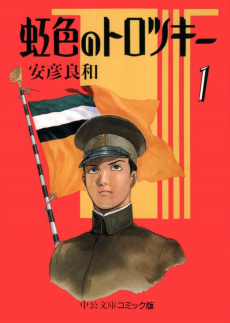 MANGA DramaNijiiro no Trotsky
MANGA DramaNijiiro no Trotsky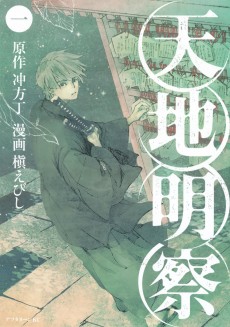 MANGA DramaTenchi Meisatsu
MANGA DramaTenchi Meisatsu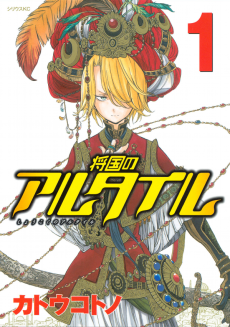 MANGA AdventureShoukoku no Altair
MANGA AdventureShoukoku no Altair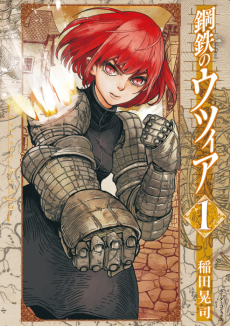 MANGA ActionKoutetsu no Łucja
MANGA ActionKoutetsu no Łucja
SCORE
- (3.95/5)
TRAILER
MORE INFO
Ended inApril 18, 2022
Favorited by 182 Users


